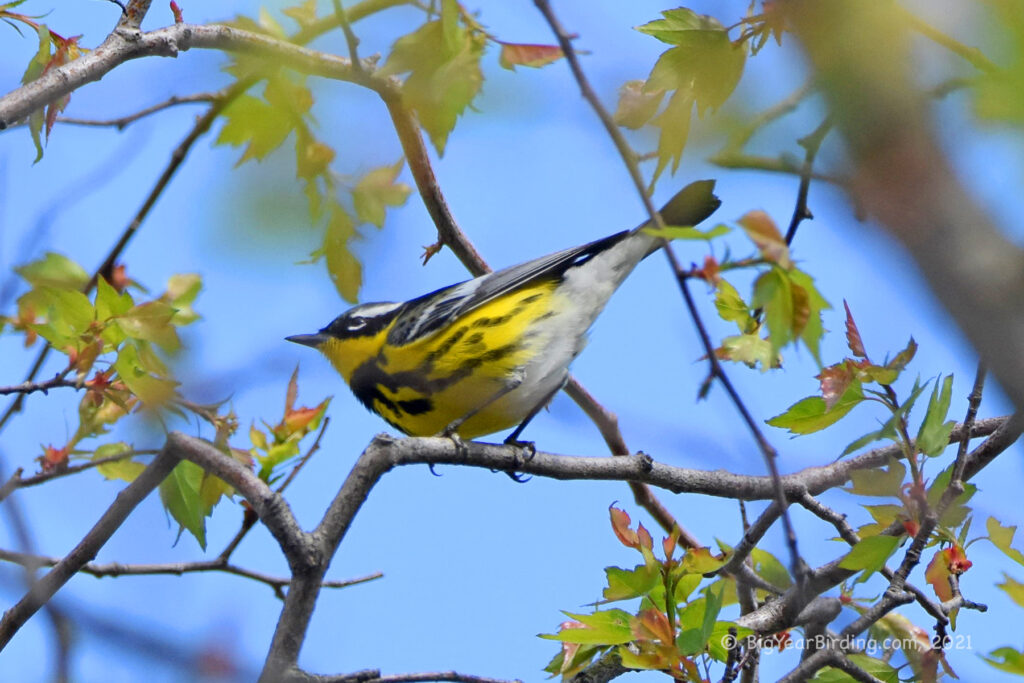
The Magnolia Warbler (Setophaga magnolia) is a small songbird with a length of approximately 4.3 to 5.1 inches (11-13 cm) and a wingspan of 7.5 inches (19 cm). It weighs between 0.25 and 0.39 ounces (7-11 grams). The male and female Magnolia Warblers have similar plumage, with a bright yellow throat and chest, black streaks on the sides, and a bold black mask on the face. The wings and back are a vibrant greenish-blue, and the tail is black with white markings.

During migration, the Magnolia Warbler travels from its breeding grounds in North America to its wintering grounds in Central America, northern South America, and the Caribbean. The breeding range of this species is primarily in the boreal forests of Canada and the northeastern United States. It is also known to breed in some parts of the Appalachian Mountains.
The Magnolia Warbler feeds primarily on insects, such as caterpillars, beetles, and spiders, which it gleans from the foliage of trees and shrubs. During migration, it may also consume fruit and nectar.
In terms of conservation status, the Magnolia Warbler is listed as a species of least concern by the International Union for Conservation of Nature (IUCN). However, like many songbirds, it is vulnerable to habitat loss and fragmentation caused by deforestation and urbanization.

Birdwatchers often identify the Magnolia Warbler by its bold black mask and greenish-blue back. Its bright yellow throat and chest also make it stand out among other warblers. During migration, these birds may be seen in a variety of habitats, including woodlands, forests, and even urban parks and gardens.

